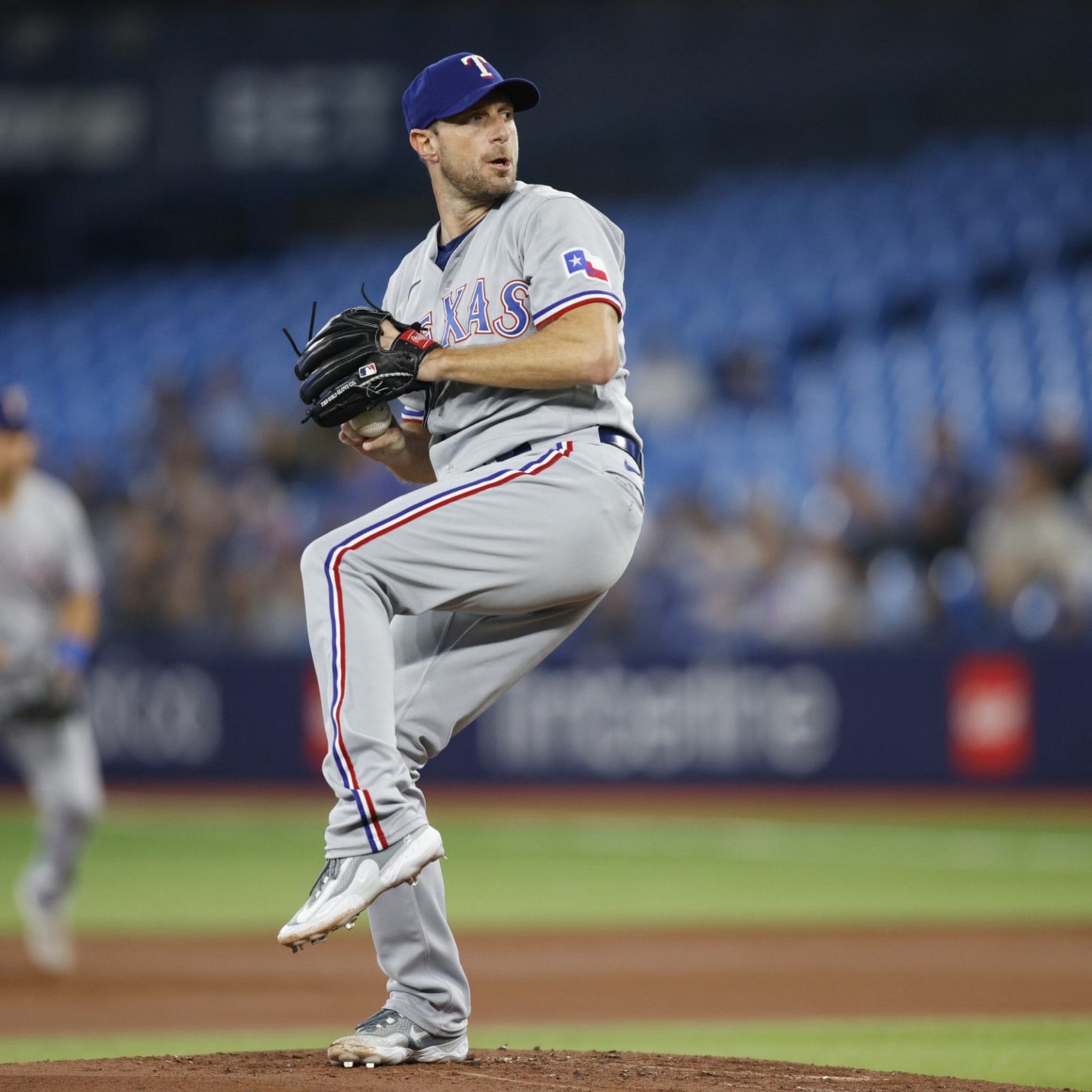What can the Blue Jays Expect out of Max Scherzer at age 40?
Max Freakin' Scherzer is a Blue Jay! How is he going to help the team win games?
Max Scherzer’s reputation precedes him, but how will his once-legendary stuff play in his age-40 season? The 2024 season offers some hints.

Across 17 seasons, Max Scherzer has put together a slam-dunk Hall of Fame career: 3,407 strikeouts across 2,878 innings en route to 73.2 fWAR is enough to make even the most in-tune fans take a step back and simply appreciate what he’s done. But at 40 years old, Scherzer isn't ready to hang up the spikes quite yet. His one-year, $15.5-million deal with the Blue Jays confirms that Scherzer will take at least one more kick at the can before enjoying a well-deserved retirement. Scherzer is no longer the pitcher he once was, but we can take a look at his 2024 to make an educated guess about what he has left in the tank for the Blue Jays in year 18.
First things first, a litany of injuries limited Scherzer to nine starts in 2024: recovering from offseason back surgery, struggling with shoulder fatigue and nerve issues, and finally a September hamstring strain that ended his season. The injuries are a concern, especially the arm fatigue, which makes this a riskier signing than we’re used to seeing from the Toronto front office. The positive sign is that when Scherzer was actually able to get on the mound in 2024, he produced solid results.
But before we plan the parade and slot Scherzer into the number one spot in the rotation, we have to look into a couple of concerning trends. That four-seamer is the biggest concern. Scherzer throws it roughly 45% of the time, making it by far his most important pitch. According to Fangraphs, its Stuff+ cratered from a solid 104 in 2023 to a horrifying 78 in 2024. That doesn’t paint a pretty picture and it's mostly about the velocity, but the fact that the Blue Jays just invested over $15 million in Scherzer tells me that expect his right arm to bounce back. Coming off of an injury-plagued season, an extended offseason may have been just what the doctor ordered for Scherzer to get his body, and therefore his four-seamer, back where it needs to be. If Scherzer is healthy, that fastball should tick back up, and its velocity will be one of the indicators I’m watching closest toward the end of spring training.
I also have my eye on the cutter. In the graphic below (courtesy of Baseball Savant), look where the red arrow is pointing. Scherzer’s cutter and slider merged into basically the same pitch in 2024, not just in their movement profiles but in their velocity. The two pitches were separated by just 1.6 mph. Hitters didn’t have to worry about differentiating between the two pitches. If we’re wrong about Scherzer being able to get back to his above-average fastball, Pete Walker’s most important project may be helping Scherzer find a way to turn his slider and his cutter back into two distinct pitches.
Older pitchers lose their ability to miss bats and limit hard contact, but in a limited sample, Scherzer was successful in both categories in 2024. His 35% hard-hit rate 29% whiff rate were both excellent, and his 36% chase rate was elite. That chase rate is a crazy number, the highest of his entire career. Even in a short sample of 43 1/3 innings, that’s a hard number to ignore. Even the chase rate on Scherzer’s fastball, which saw a huge drop of 1.3 mph from 2023 to 2024, rose from 24% to 30%. I’m open theories about exactly what happened here, but not sure if I have a guess myself. One thing’s for sure: if Scherzer can replicate this amount of chase from opposing hitters, it will be a major indicator that he’s still got it.
Launch angle is also key. Relying on his four-seam fastball in and above the zone has helped Scherzer rack up whiffs and strikeouts, but when hitters do make contact with that pitch, the ball is more than likely going to be hit in the air. For that reason, Scherzer has always been susceptible to the long ball. Even when he won the National League Cy Young in 2016, he led the NL with 31 home runs allowed. As his stuff trends down and he misses fewer bats, that’s not ideal. However, there a few other factors to consider. Back in July, Lance Brozdowski noted that against left-handed batters, Scherzer was bringing his four-seamer inside more often, effectively trading some swing-and-miss for contact suppression. It’s encouraging that even with reduced stuff, Scherzer has so far found a way to limit hard-hit balls. It also helps that he’ll be pitching in front of an outfield with elite defenders, and that Rogers Centre is far from the launching pad it used to be.
That’s a lot of concerns. We’ll be watching to see whether Scherzer can regain some velocity, figure out his cutter, and somehow keep racking up chases and avoiding hard contact. It remains to be seen how much he can help the Blue Jays return to contention, but I couldn’t forgive myself if I wrote this whole article without mentioning how damn cool it is that Max Scherzer is going to pitch for the Toronto Blue Jays.
Owen Hill is a university student in Toronto, and lifelong lover of all things baseball and all things Blue Jays. He hopes his passion for the Jays and storytelling can carry him into a career of talking about baseball.
Follow me on Twitter:_ohill
This already ran over on Jays Centre! Check out my (and all of the other great writer’s) work over there!






Great article love the statcast stuff